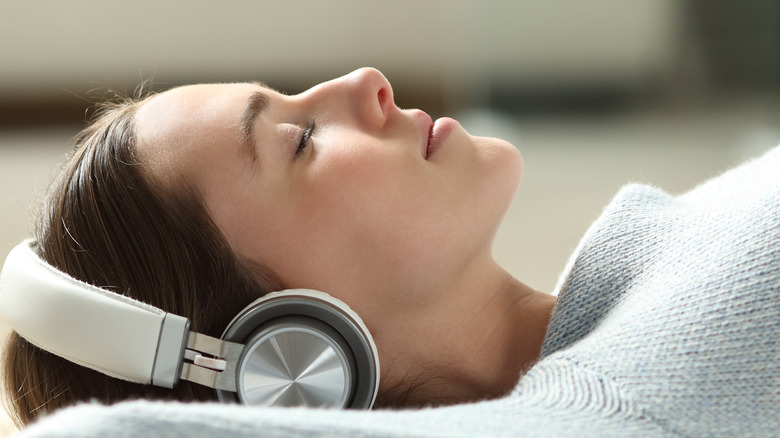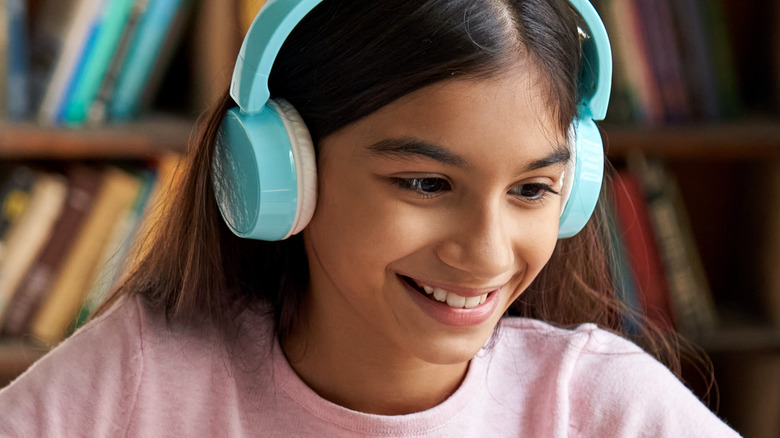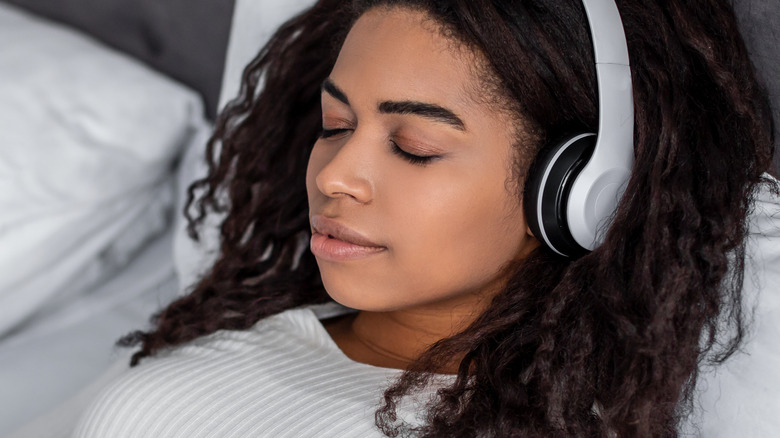Here's Why Those ASMR Videos Feel So Relaxing
There's something about the everyday sounds that are oddly satisfying to the ears and calming to the mind. The muffled crackling of dry leaves alongside a babbling stream. The rhythmic pummeling of raindrops on the tin roof. The hissing sounds of bacon sizzling in hot oil. If these sounds elicit a relaxing sensation in your mind and send you into a state of calmness, chances are you've experienced ASMR. According to a study published in the journal PLOS One, ASMR stands for autonomous sensory meridian response, which is the experience of tingling sensations in the crown of the head in response to specific sights and sounds such as whispering and hand movements.
ASMR has experienced tremendous growth in popularity in recent years and is now one of the most-watched YouTube categories thanks to its mind-pampering and brain-melting effects. Cooking and eating, mic brushing, fan whirring, and soap cube cutting are common ASMR video archetypes. Although repetitive, these tingly ASMR effects and the calming, euphoric feeling they provide never fail to draw viewers back for more. According to a study on ASMR that involved 475 individuals and was published in the journal PeerJ, 82% of the participants said they used ASMR to sleep better, 70% to cope with stress, and 5% to get sexual stimulation from the materials. Here's why ASMR is such a big fuss in the 21st century.
Those watching ASMR videos experienced decreased heart rate
Researchers from the University of Sheffield and Manchester Metropolitan University discovered that people who watched ASMR videos had a lower heart rate, which explains the widely reported relaxation and peace felt throughout the body. Stress raises your heart rate, whereas soothing activities like meditation and yoga can lower both your stress and your heart rate.
Endorphins and oxytocin, the love hormones that trigger intense emotions of comfort and sleepiness, are released by the brain during ASMR, per a 2018 study in the journal BioImpacts. The behaviors that cause oxytocin release are comparable to those that cause ASMR, such as delicate stroking of the hair or repetitive caressing of the skin. Similar brain areas that are stimulated during moments of bonding or personal attention from a caring person are also activated during ASMR, causing an acute feeling of pleasantness. "It may be likely that about 10-20% of the global population is able to experience ASMR," explains Dr. Craig Richard, a professor of biopharmaceutical sciences (via National Geographic).
Not everyone experiences ASMR
As it turns out, not everyone experiences ASMR the same way, probably as a result of neurodiversity. For example, while some find common ASMR triggers such as page-turning, crunchy eating, or scalp stroking soothing, others feel nothing at all. According to an analysis of ASMR published in PLOS One, people who reported experiencing ASMR had higher degrees of neuroticism and anxiety, and watching ASMR videos helped them feel less anxious. In other words, people with higher levels of anxiety and neuroticism are more likely to benefit from ASMR, which can be considered a mood-improvement intervention. Meanwhile, a study in the 2017 journal Frontiers in Psychology suggests that those who are naturally curious have a tendency to daydream are more likely to experience ASMR.
Despite numerous reports that ASMR can promote faster and more sound sleep, the Sleep Foundation claims that there aren't many scientific data supporting ASMR as a sleeping aid. However, you never know if some ASMR triggers work for you until you try them. If you want to use ASMR as a sleep-aid instrument, combine it with conducive sleep practices and pre-sleep exercises to get yourself completely relaxed before going to bed. Wrapping up, while ASMR is an increasingly trending form of relaxation, there is no guarantee that everyone will feel the notorious "tingling sensation" from the triggers. If you can't experience any feelings of comfort from ASMR triggers, you might want to check out other relaxation techniques such as aromatherapy, biofeedback, or meditation.


